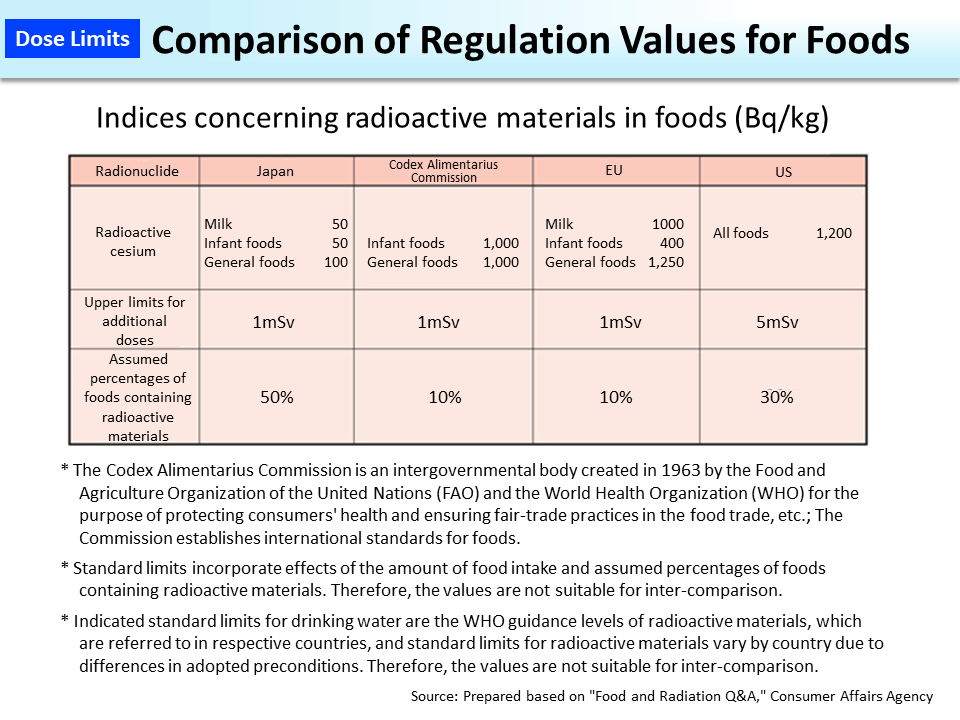Comparison of Regulation Values for Foods
In Japan, new standard limits for radioactive materials in foods were established and were put into force on April 1, 2012. The new standard limits were set by classifying foods into four categories and the standard limit for drinking water, which is most frequently taken by people, was set at 10 Bq/kg.
The standard limit for milk, which children generally drink a lot of, was reduced to 50 Bq/kg. Additionally, a new category, "infant foods," was made for ensuring safety for infants and the standard limit therefor was set at 50 Bq/kg, the same as that for milk. The standard limit for other general foods is 100 Bq/kg.
All foods other than infant foods were categorized as general foods based on the idea to minimize gaps in additional doses caused by differences in individuals' eating habits. The value was set with sufficient room to ensure safety no matter what foods people eat as long as radioactive Cs concentrations therein are within the standard limit.
Regulation values vary by country due to differences in annual exposure dose limits based on which the respective countries set their standard limits and in contamination rates in foods, etc. (In Japan, regulation values were set on the safe side based on the annual exposure dose limit of 1 mSv and on the assumption that 50% of general foods and 100% of milk and infant foods are contaminated. On the other hand, the Codex Alimentarius Commission specifies the annual exposure dose limit as 1 mSv and assumes that 10% of foods are contaminated.)
(Related to p.43 of Vol. 2, "Standard Limits Applied from April 2012")
- Included in this reference material on March 31, 2013
- Updated on February 28, 2018

